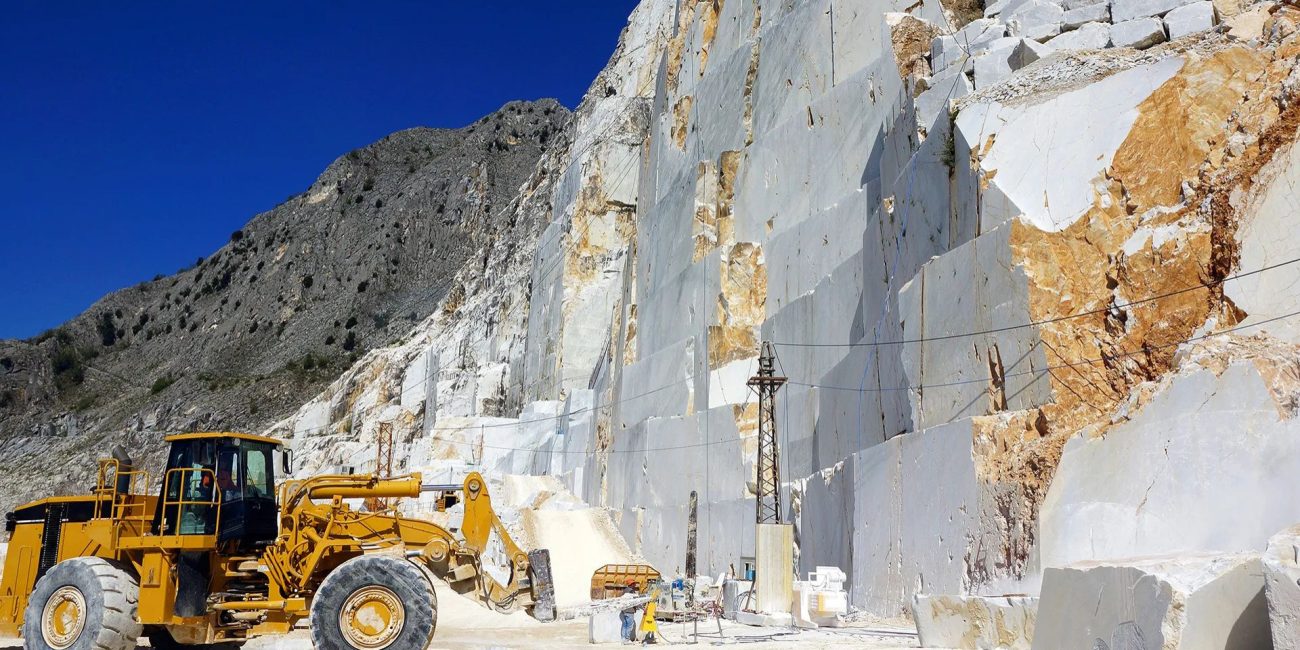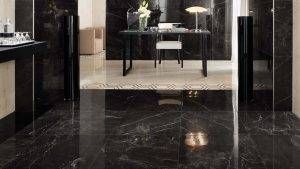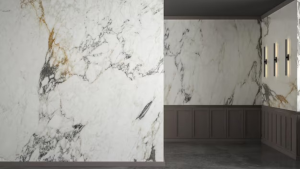Marble is admired worldwide for its beauty, elegance, and timeless appeal. From ancient monuments to modern homes, it has always been seen as a mark of luxury. But many wonder: how was marble made?
The answer begins deep within the earth, where limestone transforms into marble under heat and pressure. It continues in quarries, where blocks are cut, and in factories, where the stone is polished and shaped. Finally, it arrives in our homes as stunning floors, countertops, and walls. In this blog, we’ll explore marble’s journey from nature to finished surfaces.
What is Marble?
Marble is a metamorphic rock formed when limestone is subjected to intense heat and pressure. Over time, the crystals in the stone grow, creating the smooth texture and shine that marble is known for.
- Composition: Mostly calcite (calcium carbonate).
- Colors: White, black, green, red, and more, depending on minerals.
- Uses: Flooring, countertops, wall cladding, sculptures.
Every marble factory plays an important role in refining raw blocks into slabs that are ready for homes and commercial projects.
How Was Marble Made in Nature?
Marble’s creation is a natural process that takes millions of years.
The Geological Process
- Limestone Formation: Limestone forms in seas and oceans, rich in calcite.
- Heat & Pressure: Tectonic movements push limestone deeper underground.
- Metamorphism: Heat and pressure recrystallize limestone into marble.
- Natural Beauty: Minerals add unique veins and colors to each slab.
Example: Iron oxide creates red hues, graphite produces grey or black, and serpentine brings shades of green. This is why no two marble slabs are ever the same.
The Journey of Marble – From Quarry to Factory
Quarrying and Extraction
Marble blocks are carefully cut from quarries using advanced tools like diamond wire saws. Precision is key because cracks can damage the stone.
Transportation to Processing Centers
Once extracted, marble blocks are transported for processing. For example, a marble factory in Sharjah uses modern machinery to cut, polish, and finish marble for local and international projects.
Cutting and Polishing
- Cutting: Gang saws slice large blocks into thin slabs.
- Polishing: Abrasives and powders bring out marble’s shine.
- Sizing: Slabs are shaped for floors, walls, or countertops.
This process turns raw stone into beautiful slabs ready for use.
How Was Marble Made Ready for Homes?
Once polished and cut, marble is customized for specific uses.
Customization
- Countertops require precise edge profiles.
- Flooring slabs need an even thickness.
- Decorative items demand detailed carving.
Sealing for Protection
Marble is porous, so it must be sealed to resist stains and water. Sealing adds a protective barrier and helps maintain durability.
Classic Craftsmanship
Renowned brands like Classic Marble Company are known for turning raw marble into luxury surfaces. With advanced techniques and expert finishing, they deliver slabs that add elegance to homes and offices worldwide.
Why Marble Remains Popular Today
Marble is not just beautiful; it is also practical when maintained well.
- Luxury appeal: instantly elevates interiors.
- Durability: lasts for decades when cared for.
- Versatility: works in kitchens, bathrooms, floors, and walls.
- Uniqueness: No two slabs are identical.
Trusted suppliers like Marble company in Sharjah continue to meet global demand by offering high-quality marble with excellent finishing.
Choosing the Right Marble Supplier
Choosing the right supplier is critical to ensure quality and long life.
| Factor | Low-Quality Supplier | Trusted Supplier |
| Stone Quality | Cracks, uneven texture | Dense, smooth, durable slabs |
| Cutting & Polishing | Rough and irregular | Precise, even, and polished finishes |
| Variety | Limited options | Wide range of global marbles |
| Support | None | Care, sealing, and maintenance tips |
The right supplier ensures you get marble that looks stunning and lasts for years.
Caring for Marble After Installation
Marble must be maintained properly to preserve its shine.
Do’s
- Wipe spills immediately.
- Use coasters and mats.
- Reseal once a year.
Don’ts
- Avoid acidic cleaners like vinegar or lemon.
- Don’t scrub with steel wool.
- Never leave water standing on the surface.
For surfaces like countertops, check our detailed guide on how to clean a marble countertop.
Conclusion
So, how was marble made? It starts with limestone deep within the earth, transforms into marble through heat and pressure, and is refined in quarries and factories. After cutting, polishing, and sealing, it reaches our homes as a timeless material.
Frequently Asked Questions
How was marble made naturally?
Marble is formed when limestone undergoes heat and pressure over millions of years, turning into a strong and beautiful stone.
How is marble processed after quarrying?
It is taken to a marble factory, cut into slabs, polished, and prepared for use in homes and buildings.
Why is marble considered a luxury choice?
Marble is considered a luxury choice because of its unique veins, shine, and timeless elegance. Marble adds beauty and value to any space.
What makes Classic Marble Company special?
It is known for high-quality finishes and luxury surfaces that are customized for global clients.
How can I maintain marble at home?
Seal regularly, wipe spills quickly, and avoid acidic cleaners to keep your marble stain-free and shiny.






